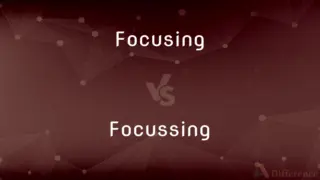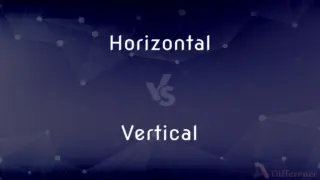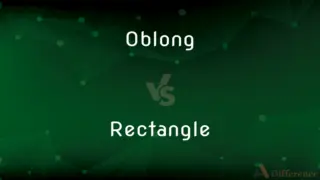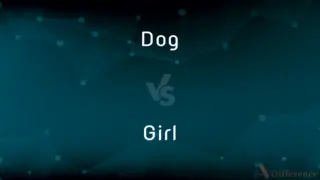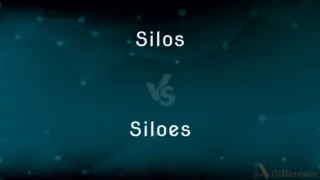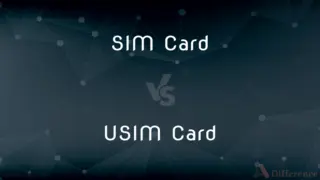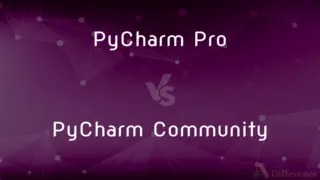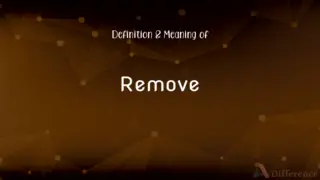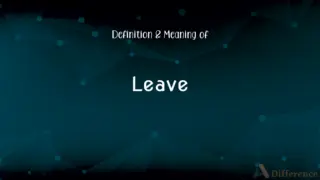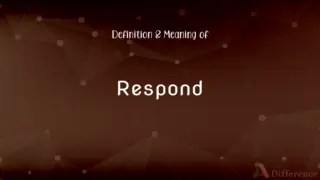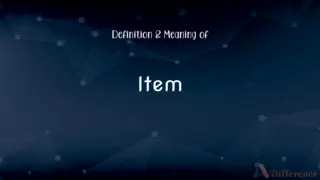ANSI vs. UTF-8 — What's the Difference?
Edited by Tayyaba Rehman — By Fiza Rafique — Published on December 22, 2023
ANSI is a character encoding standard primarily for the English language and some additional characters. UTF-8 is a universal character encoding that supports a wide range of symbols from various languages.

Difference Between ANSI and UTF-8
Table of Contents
ADVERTISEMENT
Key Differences
ANSI, standing for the American National Standards Institute, originally developed character sets for encoding English text. It’s primarily a single-byte encoding system which means it can represent a maximum of 256 characters. On the other hand, UTF-8, or Unicode Transformation Format - 8-bit, is a multi-byte character encoding system. It's a part of the Unicode standard which is capable of encoding all possible characters, or code points, in Unicode.
The primary difference between ANSI and UTF-8 is the number of bytes they use for encoding and the range of characters they can represent. ANSI uses a single byte and is limited to 256 distinct characters, which may change based on regional settings. UTF-8, however, uses one to four bytes, allowing it to represent a significantly broader range of characters from numerous languages and scripts.
ANSI's character encoding primarily supports English and some extended characters, making it somewhat restrictive for diverse and multilingual content. UTF-8's design, in contrast, supports a vast array of languages, special characters, and symbols. This universal nature of UTF-8 makes it a popular choice for web and software applications where multiple languages are a norm.
Though ANSI has been historically significant in the evolution of text encoding, the limitations in its capacity to support global languages have made UTF-8 a preferred standard in modern computing. Both ANSI and UTF-8 have their roots in the need to represent text digitally, but while ANSI's scope is relatively narrow, UTF-8's breadth encompasses a global array of characters and symbols.
Comparison Chart
Origin
American National Standards Institute
Unicode Consortium
ADVERTISEMENT
Byte Use
Single-byte
Multi-byte (1-4 bytes)
Character Capacity
256 characters
Over a million characters
Primary Language Focus
English and some extended characters
Universal, supports multiple languages
Modern Usage
Less common due to limited character set
Widely used due to extensive support
Compare with Definitions
ANSI
A character encoding primarily for English text.
The document was saved in the ANSI format, limiting its special characters.
UTF-8
Part of the Unicode standard, capable of representing a vast range of characters.
UTF-8 can represent characters from languages as diverse as English, Chinese, and Arabic.
ANSI
An organization responsible for coordinating standards across various U.S. industries.
ANSI plays a pivotal role in ensuring consistent standards across diverse sectors.
UTF-8
A widely adopted encoding for web and software applications.
For a globally accessible website, developers prefer UTF-8 for its extensive language support.
ANSI
A standard defining protocols in multiple areas, including IT and machinery.
Many companies follow ANSI guidelines for product development.
UTF-8
A multi-byte encoding system that varies from 1 to 4 bytes.
Due to its multi-byte nature, UTF-8 can encompass a broader character set than ANSI.
ANSI
A legacy text encoding system superseded by Unicode encodings like UTF-8.
Older software versions might still default to ANSI for text representation.
UTF-8
An encoding that is backward compatible with ASCII.
ASCII text remains unchanged when converted to UTF-8.
ANSI
A set of standards established by the American National Standards Institute.
ANSI standards are used in various industries to ensure compatibility and interoperability.
UTF-8
A universal character encoding standard.
Websites typically use UTF-8 encoding to support multiple languages.
Common Curiosities
Why is UTF-8 preferred in web applications?
UTF-8 supports a vast array of languages, special characters, and symbols, making it ideal for multilingual web content.
What does ANSI stand for?
ANSI stands for the American National Standards Institute.
Are there other Unicode encodings besides UTF-8?
Yes, other than UTF-8, there are UTF-16 and UTF-32 Unicode encodings.
Is ANSI used for languages other than English?
ANSI primarily supports English and some extended characters. Its support for other languages is limited based on regional settings.
Can an ANSI encoded file be converted to UTF-8?
Yes, an ANSI file can be converted to UTF-8, but special characters not present in ANSI might not be represented correctly.
What's the relation between ASCII and UTF-8?
UTF-8 is backward compatible with ASCII. ASCII characters remain unchanged in UTF-8.
How is UTF-8 different from ANSI in terms of encoding capacity?
UTF-8 can represent a broader range of characters using 1-4 bytes, while ANSI uses a single byte and is limited to 256 characters.
What's the significance of "8" in UTF-8?
The "8" signifies that UTF-8 uses 8-bit blocks or bytes for encoding characters.
Is UTF-8 suitable for storing text in any language?
Yes, UTF-8 can represent characters from virtually all modern languages, making it highly versatile.
What happens when a UTF-8 encoded file is opened in software supporting only ANSI?
Characters not supported by ANSI may not display correctly or could be represented as gibberish.
How does ANSI affect software compatibility?
Software relying on ANSI might face issues with character representation when dealing with multilingual content.
Which industries typically adopt ANSI standards?
ANSI standards span diverse sectors, from IT and manufacturing to health and safety.
Why might one still encounter ANSI-encoded files?
ANSI-encoded files might still be found in older software or systems where only English and basic characters were needed.
Can software handle both ANSI and UTF-8 encoded files?
Many modern software applications can handle both encodings, but it's always advisable to check compatibility.
Is ANSI still being updated or used?
While ANSI standards cover many areas, its text encoding is largely considered legacy and has been superseded by Unicode systems like UTF-8.
Share Your Discovery

Previous Comparison
Type I Errors vs. Type II Errors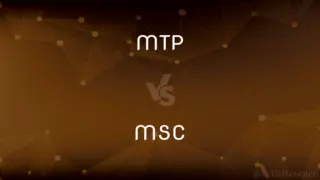
Next Comparison
MTP vs. MSCAuthor Spotlight
Written by
Fiza RafiqueFiza Rafique is a skilled content writer at AskDifference.com, where she meticulously refines and enhances written pieces. Drawing from her vast editorial expertise, Fiza ensures clarity, accuracy, and precision in every article. Passionate about language, she continually seeks to elevate the quality of content for readers worldwide.
Edited by
Tayyaba RehmanTayyaba Rehman is a distinguished writer, currently serving as a primary contributor to askdifference.com. As a researcher in semantics and etymology, Tayyaba's passion for the complexity of languages and their distinctions has found a perfect home on the platform. Tayyaba delves into the intricacies of language, distinguishing between commonly confused words and phrases, thereby providing clarity for readers worldwide.

